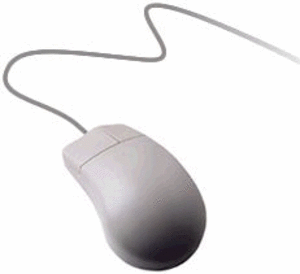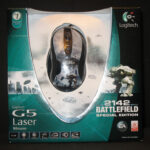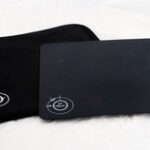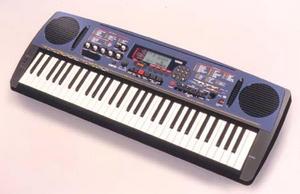Being a severely disabled writer is quite a challenge. For one thing, I have very little use of my hands. I type with a typing wand, or as I like to call it, a headstick. “Typing wand” makes me sound like a nerdy magician. Some handicapped people use chin pointers to type. Others use programs such as Dragon Naturally Speaking to dictate to the computer. Technology has developed to the point where you can actually move a mouse by simply moving your head. A laser dot is placed on your forehead and the cursor’s movements correspond to those of the laser.
There’s just one problem with these assistive devices. No “special” gadget that I know of allows you to control the mouse with minimal effort, optimum speed, and pinpoint accuracy. Luckily, there are ways to work around this obstacle. You don’t need to be able to use a mouse to be able to utilize every aspect of your computer. Even non-disabled people can operate a PC without the aid of a mouse. Mac users can also get by without a mouse, but this article was written with PC users in mind. To be more specific, I use Windows XP in Classic View. The following guide applies to most operating systems. I’m not sure about you Linus weirdoes.
MouseKeys
I don’t know how I managed in the years preceding my discovery of MouseKeys. Most people have never heard of it, but it’s already on your computer. It allows you to move the mouse by using the number pad on the right side of the keyboard. To access MouseKeys (and other goodies that I’ll get to later), click on the Start menu and select Control Panel. The first icon displayed is Accessibility Options (see second image). Double-click it. Now!
Click the Mouse tab at the top of the dialog box (see third image). Check the box next to “Use MouseKeys.” You may want to tinker with the way this option works, so click on Settings (see fourth image). Here, we can customize our MouseKeys. To decrease or increase the speed of the mouse, drag the Top Speed slider arrow left or right. You can also adjust the acceleration speed of the mouse. My advice is to set both speeds on high. A slow acceleration speed can be very trying. I can assure you that it will never be too fast to handle. These speeds vary from computer to computer, but for me, faster is easier.
Let’s run through all of the MouseKeys actions. To move the mouse, press the arrow keys. To left-click, press “5.” To right-click, press “-” and then “5.” To disable right-clicking, press “/”. To drag, press “0.” To drop, press Delete. To double-click, press “+”. You can alter the functionality of MouseKeys so that pressing Num Lock activates and deactivates the feature.
StickyKeys
If you’ll notice, MouseKeys doesn’t require you to press two keys at once. Software manufacturers tend to overlook the fact that some of us can only press one key at a time. Capitalizing letters used to be a taxing affair for me until I discovered StickyKeys. StickyKeys allows for lazy/disabled PC users to bypass multiple key tapping. To access StickyKeys, go back to Accessibility Options. StickyKeys is the first option under the Keyboard tab (see fifth image). Check the box next to StickyKeys. To adjust StickyKeys settings, click…um, Settings. StickyKeys may be even more beneficial than MouseKeys. It saves hundreds of key strokes per session. How does it work? The first letter entered after pressing a Shift key is automatically capitalized. There’s always Caps Lock if you want to capitalize a succession of letters. Pressing a Shift key twice also “locks” caps mode.
StickyKeys comes in handy when inserting symbols and punctuation. For example, I used StickyKeys when typing the following sentence. What the !^*# are you looking at, you (#%@!&>???? This feature also works with the Ctrl key, the Alt key, and the Windows logo key. You can even execute CTRL+ALT+DEL by striking each key once. StickyKeys further broadens the range of activities you can do on the computer without using a mouse. Disabled people can now close windows and save documents just as quickly as non-disabled people can. We do it with more gusto, too.
Keyboard Shortcuts
Every PC user is aware of keyboard shortcuts. ALT+F4 closes a window. CTRL+S saves a file. CTRL+C copies, CTRL+V pastes, and CTRL+X cuts. Thanks to StickyKeys, I can perform all of those actions with ease. Every action you can possibly think of has a keyboard shortcut. I’ve memorized zillions of shortcuts, but what if you forget one? Microsoft was courteous enough to simplify shortcutting. If you click File on the menu bar, you’ll notice that each option (Open, Exit, Print, etc.) has a letter underlined. This is the letter you would press to select that particular option. Of course, keyboard shortcuts are usually listed in the drop-down menu, but hey, the menu is already open.
If you want to “select all” in Microsoft Word, you can either press CTRL+A or you can press ALT+E+L. If you want to spellcheck your document in Word, you can either hit F7 or you can hit ALT+T+S. Obviously, I could list pages of keyboard shortcuts, but this is merely a general how-to guide. When you’re done reading this article, press ALT+A+A to add this page to your favorites. While you’re at it, perform that same action with all of my articles.








